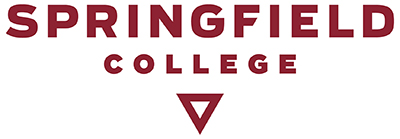Scannable Resume Tips
Are you sure someone is going to take the time to actually read your resume?
Today many companies/organizations have the capability to scan your resume into an automated applicant tracking system. These systems rank the candidates according to a score which is based on a keyword search.
Do I need a scannable resume?
For individuals who are applying to larger organizations, yes. In increasing numbers, companies are utilizing electronic tracking systems to improve their efficiency and productivity. With the dramatic increase in the number of applicants, many companies are utilizing scanning systems. To compete effectively you need to keep apprised of the technological influences in your job search. Having a scannable resume will maximize your exposure and marketability.
The following are a few recommendations loosely based on Joyce Lain Kennedy's Electronic Resume Revolution, which is available in the Career Center's Career Resource Library. Adhering to these suggestions will enable you to develop an efficient and effective scannable resume.
Use keywords
Keywords are how the computer system sorts and ranks your resume. Unlike your traditional resume where action verbs are emphasized, the scannable resume focuses on buzzwords. The employer selects and searches for the keywords or descriptors that describe what the employer seeks. Careful review of the job description can provide valuable clues for keywords or qualities to incorporate into your resume.
Be selective in your use of fonts - Although scanners are becoming more effective, many print styles fail to convert resulting in muddled text, rendering your resume unreadable by the computer system. When you are being evaluated on "keywords", the lack of recognition and clarity are major considerations. Font size should be 10 to 14 points.
Recommended fonts:
Optima; Palatino; Helvetica; Times; Univers; ITC Bookman; sans-serif
Avoid
Avoid Comic Sans, italic text, scripts, and underlined passages.
Boldface is accepted with most systems. The key with an electronic resume is simplicity. Do not use graphics and shading. Justify the text to the left margin, don't use columns. Use horizontal and vertical lines sparingly. Best to avoid them altogether. Use laser print quality original, never use a dot matrix printer. Always send original. Use light-colored, standard-size 8.5 by 11 inch paper, printed on one side only.
Saving Your Resume
Most employer systems require an electronic version of your resume. To avoid problems associated with viewing your resume always save your document as a Rich Text File (RTF) or Text File with Line Breaks. These universal formats will enable a high degree of integrity for your documents and dramatically reduce the likelihood of technical problem in opening your documents. This is the recommended format for all email/electronic job search correspondence.
When faxing the resume set the resolution on fine or super fine Don't fold your resume for it will hinder fax transmission quality and scanning ability. Follow up with written version of resume and cover letter. Even if they are using an electronic tracking system, written correspondence remains invaluable. It is important to remember that electronic tracking only sorts the applicants. The human element, although diminished, remains the ultimate determiner.
*The Career Center encourages exploring the Internet for job opportunities. The Internet also allows you to post your resume for potential employers to review.
